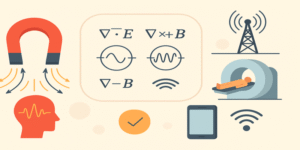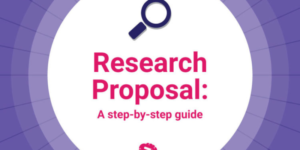Workplace Conflict is an inescapable reality of organisational life. Whether due to personality clashes, unclear communication, competition for limited resources, or conflicting goals, disagreements among colleagues or between staff and management are bound to arise. Yet, contrary to common perceptions, not all conflict is detrimental. When managed well, conflict can fuel innovation, challenge outdated norms, and enhance decision-making quality (Jehn, 1995).
The ability to master conflict is thus an indispensable skill for leaders, managers, and employees alike. It requires a strategic, emotionally intelligent, and inclusive approach that transforms discord into development. This article explores seven proven strategies to effectively manage and resolve conflict in the workplace, drawing upon established theoretical frameworks and practical insights.
1.0 Address Issues Early
A proactive approach is the cornerstone of effective conflict resolution. As Robbins and Judge (2013) observe, early intervention stops misunderstandings from escalating into full-blown disputes. Often, small grievances—left unaddressed—fester into deeply personal conflicts that are harder to untangle.
Encouraging employees to speak up early through open-door policies, anonymous feedback systems, and psychologically safe environments is critical (Edmondson, 2019). HR teams and managers must be trained to spot signs of tension—such as withdrawal, sarcasm, or drops in performance—and act promptly, rather than waiting for formal complaints.
Proactive conflict identification also requires leaders to be present and approachable, fostering trust that enables early disclosures.
2.0 Hear What’s Really Being Said
Active listening goes beyond simply hearing words—it involves empathic engagement and reflective response. The seminal work of Rogers and Farson (1979) defines it as “listening with the intent to understand, not to reply.” In many conflicts, what is said is often layered with emotion, frustration, or defensiveness.
By using techniques such as paraphrasing, mirroring emotions, and asking clarifying questions, the listener can gain insight into the speaker’s true concerns. Covey (2004) famously emphasised, “Seek first to understand, then to be understood,” underlining the power of empathetic dialogue in resolving misunderstandings.
Moreover, when people feel genuinely heard, their emotional reactivity decreases, creating room for collaborative problem-solving (Brown, 2018).
3.0 Separate the Person from the Problem
In emotionally charged situations, individuals often conflate personal characteristics with professional disagreements. This personalisation leads to blame, resentment, and ego-driven arguments. Fisher, Ury, and Patton (2011), in their influential book Getting to Yes, advocate for a “people-problem” separation strategy. This approach entails treating the other party with respect and empathy, while jointly attacking the issue at hand.
For example, instead of saying “You’re always careless,” a more constructive framing is “There have been a few data entry errors recently—how can we prevent them in future?” This depersonalised framing reduces defensiveness and invites cooperation.
By focusing on behaviour and outcomes—rather than character flaws—discussions stay solution-oriented.
4.0 Focus on Interests, Not Positions
In most disputes, parties become entrenched in positions (what they say they want), rather than exploring the interests (why they want it). Fisher et al. (2011) highlight the importance of shifting the conversation from fixed demands to underlying motivations.
Consider a conflict over remote working. One employee insists on working from home (position), while the manager demands in-office presence. Upon exploration, it emerges that the employee wants flexibility to care for a dependent, and the manager wants collaboration and visibility. This insight allows for creative compromises like hybrid schedules or technology solutions.
Reframing conversations around interests fosters integrative negotiation, leading to more satisfying outcomes (Lewicki et al., 2016).
5.0 Design Win-Win Solutions
The ideal outcome of conflict resolution is a win-win solution—where all parties feel their needs have been met, at least partially. Thomas and Kilmann (1974) categorised conflict-handling modes, with collaboration being the most constructive. Unlike compromise, which involves mutual concession, collaboration seeks to expand the pie through innovation.
HR can support this process by facilitating brainstorming sessions, involving neutral facilitators, and ensuring equity in participation. Practical steps include outlining shared goals, identifying overlapping interests, and jointly evaluating options.
For instance, in team disputes over project direction, a joint visioning workshop can redirect energy from disagreement toward co-creation.
6.0 Use Emotional Intelligence
Emotional intelligence (EI)—defined by Goleman (1995) as the ability to understand and manage emotions—is a key predictor of conflict mastery. High-EI individuals are self-aware, regulate their emotions, and read social cues effectively. This allows them to de-escalate tense situations, empathise with others, and communicate with tact.
Training in EI enables managers to stay calm under pressure, avoid reactive behaviour, and build rapport during conflict discussions. It also helps in identifying when others are triggered and adjusting tone or approach accordingly.
Organisations like Google and IBM have incorporated EI development programmes into leadership training, recognising its link with team performance and employee satisfaction (Bradberry & Greaves, 2009).
7.0 Bring in a Mediator if Needed
Despite best efforts, some conflicts persist or become too complex for internal resolution. In such cases, involving a neutral third party, such as a trained mediator, can be transformative.
Bercovitch and Jackson (2009) explain that mediators act as process facilitators, helping parties communicate constructively, identify common ground, and develop consensual agreements. Unlike arbitrators, mediators do not impose solutions, which preserves ownership of outcomes.
In the UK, organisations often partner with bodies like ACAS (Advisory, Conciliation and Arbitration Service) to access impartial mediation, particularly in unionised environments or sensitive grievances.
The Strategic Case for Conflict Mastery
Beyond interpersonal harmony, effective conflict resolution yields strategic advantages. Research has linked constructive conflict with higher creativity, stronger team decision-making, and reduced litigation costs (De Dreu & Weingart, 2003). It also enhances employee engagement, as staff feel their concerns are respected and addressed.
Poorly handled conflict, by contrast, results in absenteeism, low morale, and high turnover, with the CIPD (2023) estimating that UK employers lose billions annually due to conflict-related issues.
Thus, conflict mastery should not be viewed merely as a soft skill, but as a core organisational competency that deserves strategic investment and cultural reinforcement.
Conflict in the workplace is not a sign of dysfunction—it is a natural part of human interaction. What defines successful organisations is not the absence of conflict, but the capacity to navigate it constructively. By addressing issues early, listening actively, focusing on interests, and embracing emotional intelligence, conflict can become a catalyst for growth rather than a source of division.
Organisations that invest in conflict literacy, training, and support systems cultivate more resilient, innovative, and cohesive teams. In an era of rapid change and diverse workforces, mastering workplace conflict is not just beneficial—it is essential.
References
Bercovitch, J. and Jackson, R. (2009) Conflict Resolution in the Twenty-first Century. Ann Arbor: University of Michigan Press.
Bradberry, T. and Greaves, J. (2009) Emotional Intelligence 2.0. San Diego: TalentSmart.
Brown, B. (2018) Dare to Lead. New York: Random House.
CIPD (2023) Managing Conflict in the Modern Workplace. https://www.cipd.co.uk
Covey, S.R. (2004) The 7 Habits of Highly Effective People: Powerful Lessons in Personal Change. New York: Free Press.
De Dreu, C.K.W. and Weingart, L.R. (2003) ‘Task versus relationship conflict, team performance, and team member satisfaction: A meta-analysis’, Journal of Applied Psychology, 88(4), pp. 741–749.
Edmondson, A. (2019) The Fearless Organisation: Creating Psychological Safety in the Workplace. Hoboken: Wiley.
Fisher, R., Ury, W. and Patton, B. (2011) Getting to Yes: Negotiating Agreement Without Giving In. 3rd ed. London: Penguin Books.
Goleman, D. (1995) Emotional Intelligence: Why It Can Matter More Than IQ. New York: Bantam Books.
Jehn, K.A. (1995) ‘A multimethod examination of the benefits and detriments of intragroup conflict’, Administrative Science Quarterly, 40(2), pp. 256–282.
Lewicki, R.J., Barry, B. and Saunders, D.M. (2016) Negotiation. 7th ed. New York: McGraw-Hill Education.
Robbins, S.P. and Judge, T.A. (2013) Organisational Behaviour. 15th ed. Harlow: Pearson Education.
Rogers, C.R. and Farson, R.E. (1979) Active Listening. Chicago: University of Chicago Press.
Thomas, K.W. and Kilmann, R.H. (1974) Thomas-Kilmann Conflict Mode Instrument. Xicom Inc.









